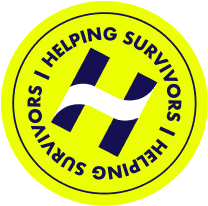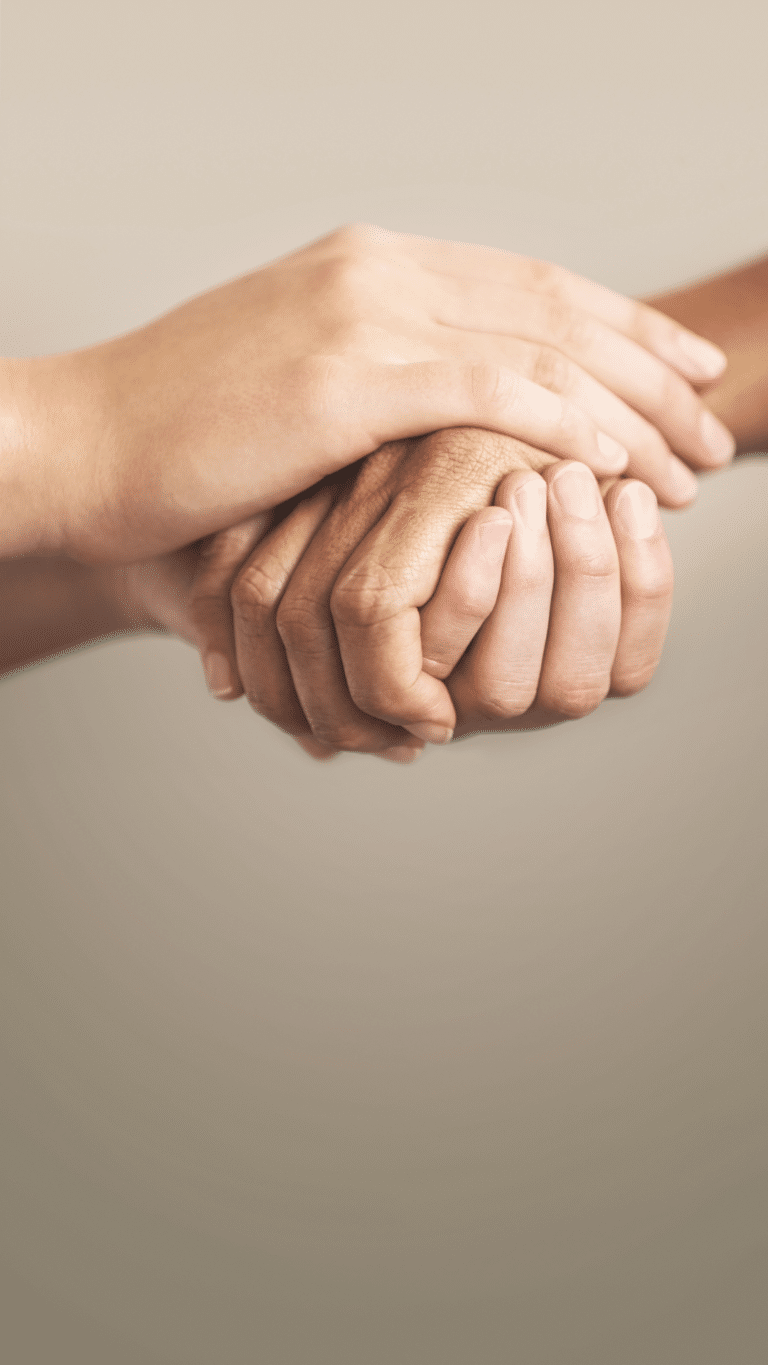Domestic Violence and Sexual Abuse
Get in-depth information on the intersection, dynamics, signs, and consequences of domestic violence and sexual abuse. Find support, healing strategies, and learn how to help victims.

Have you experienced sexual assault or abuse?
Helping Survivors can connect you with an attorney if you may have a case. While we cannot report a crime on your behalf, your safety is important. Please contact your local authorities for further assistance.
"*" indicates required fields

Author: Kathryn Kosmides
Survivor Advocate
Home » Domestic Violence and Sexual Abuse
- There is a large overlap between sexual assault and domestic violence, especially since a majority of sexual violence is perpetrated by someone the individual knows
- Domestic violence can include sexual abuse but can also include financial, emotional, religious, and digital abuse
- Based on research, the average domestic violence survivor makes 7 attempts to leave a violent relationship prior to escaping. If you need help, there are organization here to support you including the National Domestic Violence Hotline, RAINN, and Helping Survivors
What Is Domestic Violence?
Domestic violence is a pattern of behavior that is used to gain power and control in a relationship. It is typically perpetrated against an intimate partner but can impact other household members as well. Domestic violence includes the following types of abuse:
- Physical
- Psychological
- Emotional
- Sexual
- Economic
Any behavior that is meant to frighten, terrorize, harass, hurt, intimidate, manipulate, humiliate or forcibly control another person is abusive. Domestic violence impacts people of all genders, sexual orientations, socioeconomic backgrounds, educational backgrounds, ages, religions and races.
What Is Sexual Abuse?
Sexual violence within an intimate partner relationship is no less a crime than sexual violence perpetrated by a stranger, and the psychological effects are at least as severe.
Intimate partner sexual violence is often an extension of verbal and physical abuse. Victims of intimate partner sexual violence are forced to live with the perpetrator and face high risks of repeat encounters. These victims face greater than average barriers to reporting than other victims due to cultural and religious beliefs and fear of reprisal from the abuser.
What is Marital Rape?
Historically, marital rape was not a crime because consent was considered implicit as part of marriage. Thankfully, this has changed, and marital rape is illegal in at least 104 countries, including the United States.
Some cultures and religions still promote the idea that sexual intercourse is a woman’s duty to her husband. For example, some faiths prohibit divorce. In Mexico, women can be punished for leaving their husbands, even to escape violence, and many Mexican women are unaware that no such laws exist in the United States.
- What Is Domestic Violence?
- What Is Sexual Abuse?
- If you are not sure what to do, The National Domestic Violence Hotline can help you.
- Signs of an Abusive Relationship
- The Cycle of Domestic Abuse
- Why Leaving Can be Difficult for Survivors
- Demographics and Statistics of Domestic Violence
- Creating a Safety Plan
- How to Notice Someone is in Need of Help
- Want To Speak With A Lawyer?
If you are not sure what to do, The National Domestic Violence Hotline can help you.
Call 800.799.SAFE (7233) to talk confidentially with a trained professional from The National Domestic Violence Hotline.
They can put you in touch with local resources and organizations that can help wherever you are in your healing journey.
If you want to speak to a lawyer about your experience, we can help.
Signs of an Abusive Relationship
Domestic abuse rarely occurs as an isolated incident, and it often starts slowly and worsens over time.
Control
Each person in an intimate relationship should feel safe and autonomous. Control tactics are used to dominate and keep the victim from leaving.
Financial Control
Financial abuse occurs when the abuser refuses to allow the victim to acquire or maintain financial resources:
- Refusal to allow you to work or attend school
- Refusal to allow you to maintain your own bank account or be named on a mutual bank account
- Restrictions on how you can spend money
- Refusal to allow you to obtain food, clothing or other necessities
Sexual Control
Abusers may view victims as property and use sex as a form of domination and control. Cases have been documented of abusers forcing women to stop using contraception or, conversely, coercing them into obtaining abortions. Some cases documented abusers threatening to induce miscarriages through violence.
Appearance Control
Abusive partners may control the victim’s personal appearance, dictating hairstyles, clothing and the use of makeup.
Time Control
Abusive partners often control how victims spend their time. If they take longer than expected at the grocery store or arrive home late, they may be interrogated and expected to account for every minute.
Belittlement
Insults and humiliation are abusive behaviors. An abusive partner may criticize the victim constantly, even in front of friends, family and the children. Some abusers bring about intentional public humiliation and blame the victim for their outbursts.
Extreme Jealousy
Jealousy is a dangerous emotion and a red flag of an abusive relationship. Jealous individuals are often casually referred to as “the jealous type,” but jealous behaviors, such as the following, are not okay:
- Constantly checking the victim’s phone, email or social media without permission
- Frequently interrogating the victim about every human contact they have, offline and online
- Making accusations of infidelity, either overtly or by implication, while accusing the victim of lying
- Refusing to allow the victim to dress nicely or wear makeup under the assumption he or she is trying to attract someone to cheat with
Isolation
Abusive partners frequently isolate the victim from friends, family members and other supportive people. They may restrict the victim’s access to a phone or internet connection and prohibit the victim from leaving the house.
Physical Acts of Harm
Even one instance of physical violence is evidence of an abusive relationship. Physical abuse includes any of the following, whether or not marks or bruises are left:
- Slapping
- Beating
- Punching
- Kicking
- Hitting
- Pushing
- Strangling
- Hair pulling
- Hurting your children
- Withholding food or water
- Destroying your personal property
Threats
Abusive partners use threats and intimidation to invoke guilt, fear and shame. They may threaten to do the following
- Take or hurt the children
- Hurt or kill themselves
- Hurt or kill the victim
- Report the victim to the authorities for imagined offenses
Sexual Violence
Any sexual activity that is coerced or forced is abuse. Even if you are married, you always have the right to say no.
The Cycle of Domestic Abuse
Domestic abuse tends to follow a cycle. The cycle varies between couples and incidents, and it can end in a matter of hours or months. It generally consists of the following elements:

- The abuse reaches its peak level and may include physical, verbal and sexual violence.

- The remorse wears off, and the abuser slowly begins escalating.
- The abuser may nitpick, yell, criticize and make threats.
- The victim tries to appease the abuser to avoid an explosion.
- The abuser displays remorse and promises it will never happen again.
- The abuser may give gifts or promise to get help.
- The abuser may cry, threaten suicide or blame drugs or alcohol.
- The victim gives the abuser another chance.
- The abuse stops for a period of time and the victim feels relieved and hopeful.
Inevitably, the rising tension gives way to another explosive incident and repeats. The cycle will continue until it is broken. It will not stop on its own. The only way to break the cycle is for the victim to leave the situation and for both parties to receive therapy. Unfortunately, this is easier said than done.
Why Leaving Can be Difficult for Survivors
Victims rarely stay with their abusers or return simply because they want to. Many victims feel trapped.
Threats by the Abuser
The most dangerous time period in an abusive relationship is when the victim plans or attempts to leave. Abusers often make the following threats to prevent victims from leaving:
- Threats to kill or harm the victim, the victim’s friends, family members, pets or the children
- Threats to get custody of the children
- Threats to ruin the victim financially
Unfortunately, abusers do follow through with these threats. The majority of domestic abuse homicides occur while the victim attempts to leave, and as many as 20 percent of homicide victims are friends, family members, law enforcement officers and bystanders who tried to help.
Victims often lack financial resources, which makes it difficult to win custody of the children. Most victims would never voluntarily leave their children alone with the abuser.
Stalking
Stalking occurs when the abuser follows the victim against his or her wishes. Abusers may use such techniques as surveillance, phone calls, appearances at work and threatening family members and friends. The intentions could be to cause harm, intimidate, harass or force the victim’s return. This can make it impossible for the victim to maintain employment, keep a home or feel safe.
Economic Hardship
Many victims lack the necessary financial resources, work experience and residential history to provide a stable home for themselves and their children. Some fear the difficulties of single parenthood, and many lack self-esteem and confidence due to years of being beaten down.
Lack of Support
Society is not always kind to victims of domestic violence.
- Police discourage victims from pressing charges.
- Prosecutors reduce the charges so the abuser only receives probation.
- Clergy and counselors encourage relationships to be “saved” at all costs.
- Long periods of isolation contribute to feelings of having nowhere to go.
- Most communities lack transitional housing that would help victims of domestic violence.
- Some religions and cultures discourage divorce and consider it a moral failure.
Victims of domestic violence face homelessness and poverty. Undocumented victims fear deportation. Leaving is a process. On average, it takes seven attempts before leaving is successful.
Hope for Change
Many domestic violence victims stay because their relationships are fulfilling during the honeymoon periods when abuse is not occurring. They rationalize that their partner is a good person who just has bad episodes.
Demographics and Statistics of Domestic Violence
Although domestic violence can happen to anyone, some populations experience it more than others.
Gender
- Approximately 85 percent of domestic violence victims are women.
- More than 55 percent of murdered women are killed during intimate partner violence.
- 35.6 percent of women and 28.5 percent of men have experienced intimate partner violence.
Ethnicity
African American, Native American and multiracial non-Hispanic women are 30 to 50 percent more likely than Hispanic, white and Asian women to experience domestic violence, rape and stalking violence. Similar disparities have been observed among men.
Sexuality
The risk of experiencing intimate partner violence is as high for those in the LGBTQ community as in heterosexuals, and higher in many cases.
Percentages of individuals who have experienced domestic violence or rape:
Additionally, transgender individuals are four times more likely than cisgender individuals to become victims of violent crimes, and their risk for intimate partner violence is double that of cisgender households.
Social Factors
The following populations face higher risks of intimate partner violence overall:
- College women
- Less educated individuals
- Adolescents
- Low-income individuals
- Individuals dependent on drugs or alcohol
Creating a Safety Plan
Leaving an abusive relationship is a dangerous endeavor that requires planning. Create a detailed plan for where you will go, and make the following preparations in advance:
- Memorize the telephone numbers of safe people you can call.
- Change passwords on your phone and computer, and delete your browsing history to prevent the abuser from becoming aware of your plans.
- Arrange for a place to stay immediately after leaving. Preferably, it should be with someone your abuser does not know exists.
- Keep cash with you at all times if you can.
- Establish a code word with friends, neighbors, teachers, co-workers and family members, which means to call 911.
- Pack a bag containing overnight essentials and important documents, and store it with a trusted friend or family member.
- If possible, establish a bank account in your name.
- Avoid being alone after you leave.
- Remove your abuser as an emergency contact wherever applicable.
- Contact a local women’s shelter and accept as much help as you can.

How to Notice Someone is in Need of Help
The following signs could indicate a friend or loved one is the victim of domestic violence:
- They are afraid of their partner or overly anxious to please them.
- They withdraw socially.
- Their partner treats them poorly in public, ordering them around or humiliating them.
- They have physical injuries with no reasonable explanations.
- Their children are anxious or depressed.
- They dress differently, possibly to conceal injuries.
- They do not want their partner to know they are talking to you.
- They receive excessive texts or calls from their partner when they are with you.
How to Help a Victim of Domestic Violence
You may feel like you would do anything to help your loved one escape this situation. However, forcing the issue could drive the victim away. Instead, establish open communication about your concerns and become a resource so it will be easier for the victim to leave when they are ready:
- Ask a direct question or express your concerns.
- Listen and believe the victim.
- Assure the victim that you care and that they are not crazy and do not deserve to be hurt.
- Respect the victim’s choices and do not pressure them to leave.
- Help the victim build a support network.
- Be patient.
- Learn all you can about resources in your area.

Want To Speak With A Lawyer?


